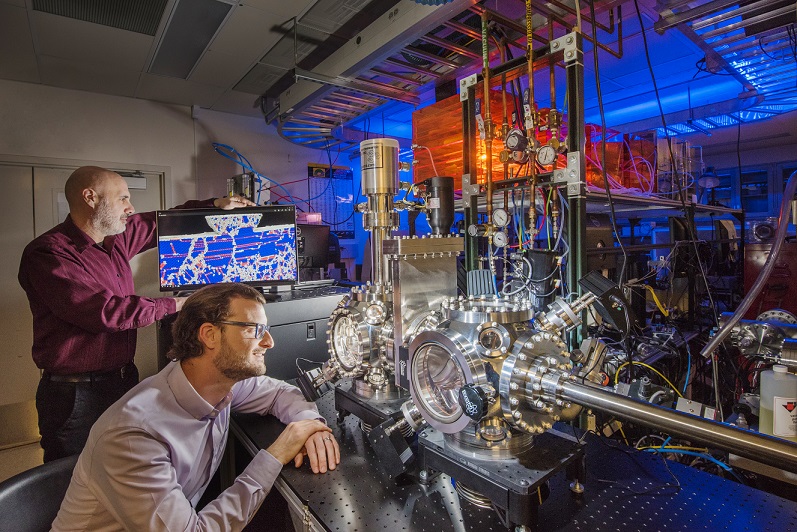
Sandia Lab’s materials science team has engineered a platinum-gold alloy which it says could be the most wear-resistant metal in the world. The alloy is reportedly 100 times more durable than high-strength steel, making it the first alloy in the same class as diamond and sapphire.
‘We showed there’s a fundamental change you can make to some alloys that will impart this tremendous increase in performance over a broad range of real, practical metals,’ said materials scientist Nic Argibay, an author on the paper.
The lab says that when using the platinum-gold coating, only a single layer of atoms could be lost after a mile of skidding on car tires.
‘These wear-resistant materials could potentially provide reliability benefits for a range of devices we have explored,’ said Chris Nordquist, a Sandia engineer not involved in the study. ‘The opportunities for integration and improvement would be device-specific, but this material would provide another tool for addressing current reliability limitations of metal microelectronic components.’
‘Many traditional alloys were developed to increase the strength of a material by reducing grain size,’ said John Curry, a postdoctoral appointee at Sandia and first author on the paper. ‘Even still, in the presence of extreme stresses and temperatures many alloys will coarsen or soften, especially under fatigue. We saw that with our platinum-gold alloy the mechanical and thermal stability is excellent, and we did not see much change to the microstructure over immensely long periods of cyclic stress during sliding.’
This story is reprinted from material from Sandia Labs, with editorial changes made by Materials Today. The views expressed in this article do not necessarily represent those of Elsevier.





